AllOutdoor Review: Henry AR-7 Survival Rifle – A Eugene Stoner Special
Russ Chastain 03.05.21
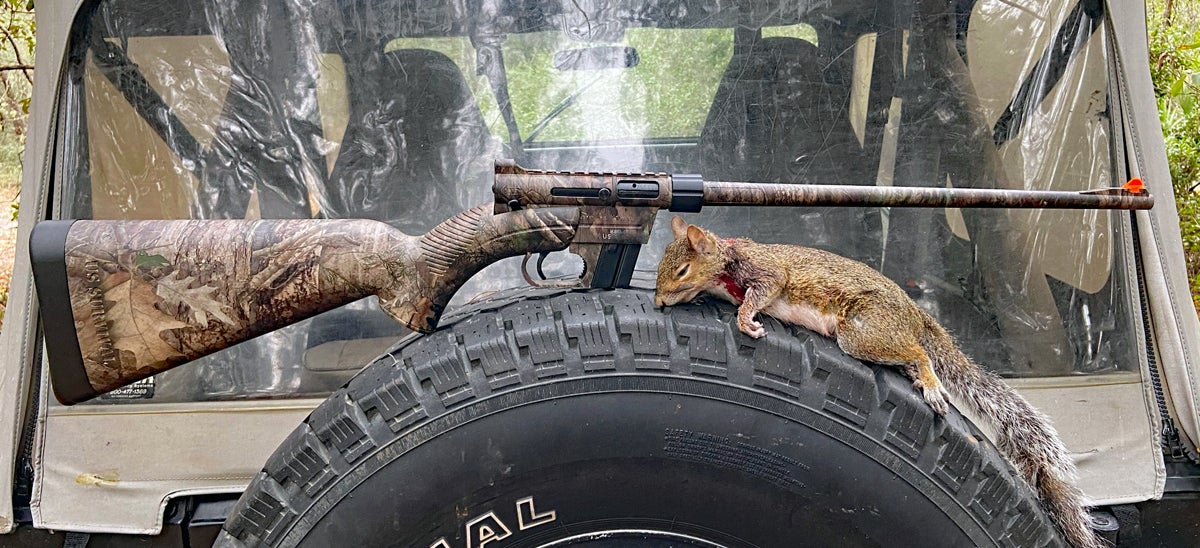
Last year I was fortunate enough to get my hands on a Henry AR-7 Survival rifle – that sweet sweet takedown, semi-automatic 22 Long Rifle designed by none other than Eugene Stoner. This handy little gun has treated me well, and the time has come for a full review.
When you first get your AR-7, one of the first things you’ll notice is the cool box. The packaging is unique as well as functional. It could stand to be about 1/4″ longer, but the disassembled/stowed rifle will fit inside this box and the folding plastic carry handle is surprisingly sturdy.
This is one gun box that might not get tossed in a closet or shoved into the attic because it makes a good case for transporting the rifle. Overall dimensions of the closed box are 17.5″ x 6″ x 2.75″ and it’s marked “HENRY US SURVIVAL” on the top and bottom with a label on one end bearing the UPC number, model specifications, serial number, etc.
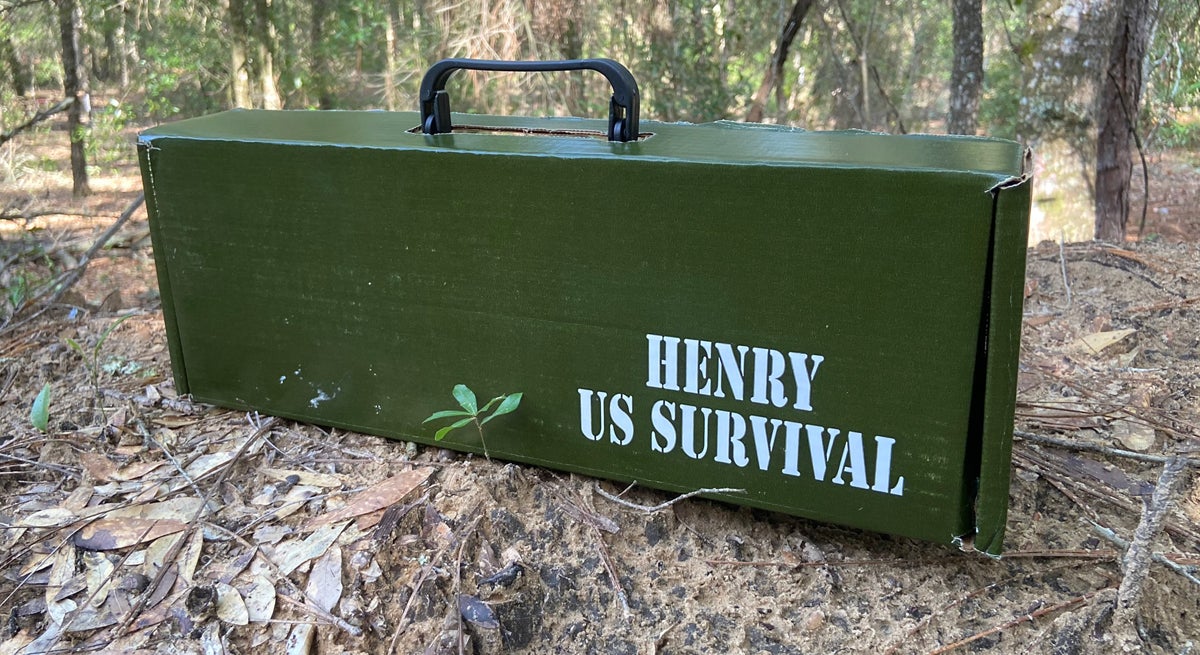
When you open the box, you’ll find a butt stock and that’s about it other than the paperwork: owner’s manual, Henry hang tag, inspection hang tag, and “The Henry Guarantee” card. The working bits of the rifle are stored inside the butt stock which is necessarily thick to accommodate it.
Molded into the stock on either side near the butt is “US SURVIVAL”, and it will rattle; not because there’s anything loose inside, but the screw which secures the receiver to the stock can wiggle around when the receiver’s not installed.
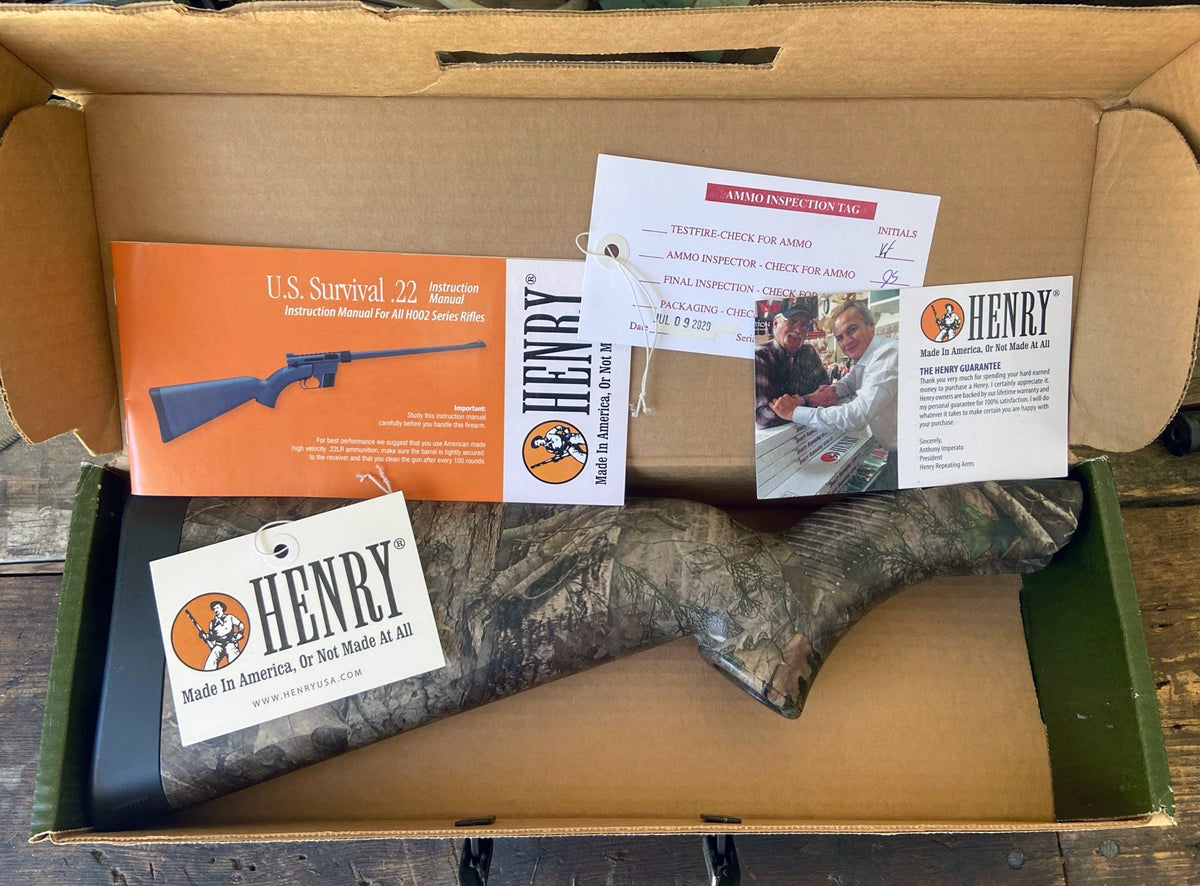
The butt pad/cap is not tight, but removing it is surprisingly tricky sometimes; other times it comes right off. There’s some texture at the toe of the cap to help you get a grip to remove it so you can get at the receiver, barrel, and two 8-round steel single-stack magazines nested inside the stock.
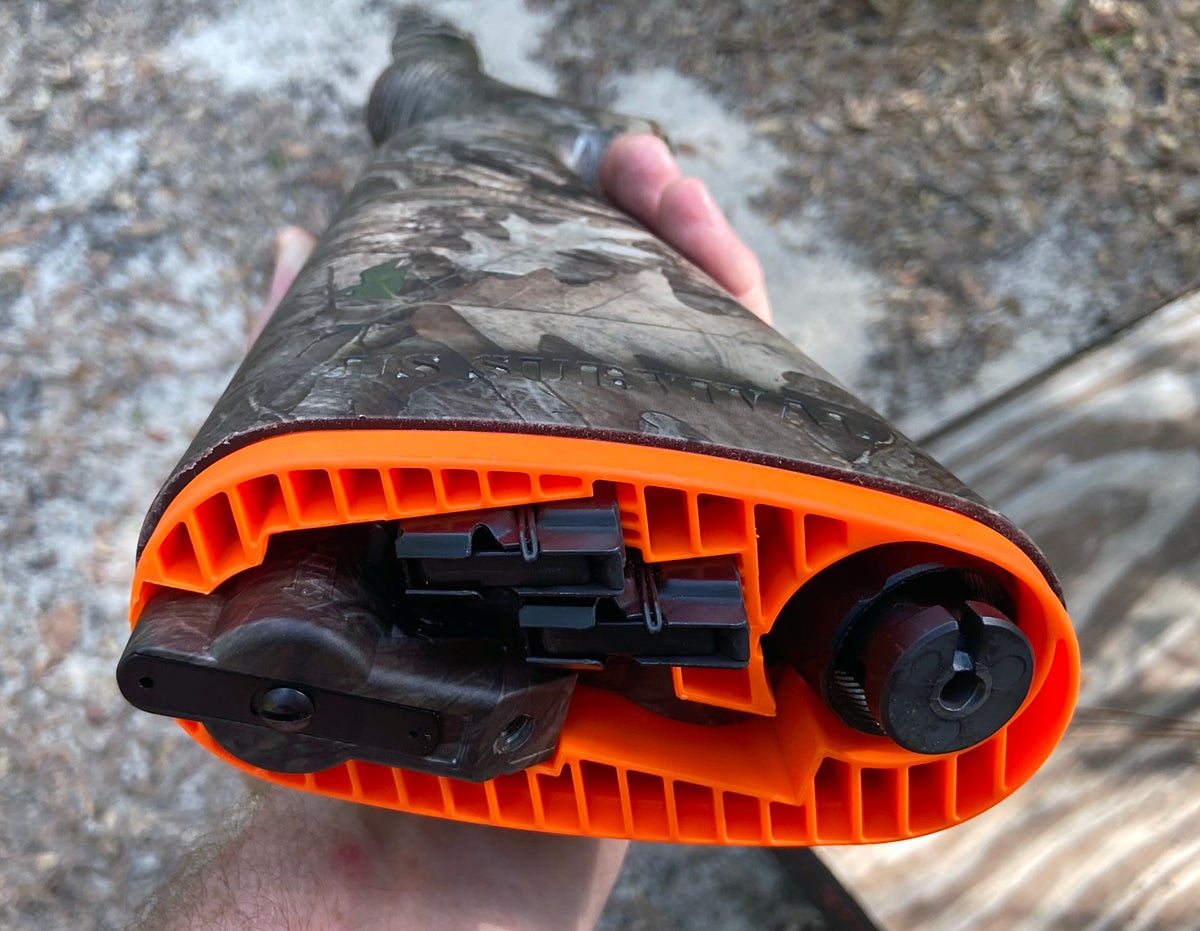
The receiver is a standalone assembly with HENRY REPEATING ARMS BAYOONE NEW JERSEY molded into its right side and HENRY U.S. SURVIVAL molded into the right side. Lower on the right side I find MODEL H002C lightly etched above the serial number.
A thumb-operated safety on the right rear of the receiver does the simple job of blocking the trigger when in the “safe” position; pushing the safety forward into “fire” position allows the trigger to move rearward to fire the rifle.

The bolt handle is a simple round plunger which moves in and out of the bolt. To disassemble for inspection and cleaning, place the safety in the rear “safe” position and with the barrel off of the receiver you can push the bolt back a little bit and remove the bolt handle by pulling it out. Then, you can remove the bolt, both action springs, and the plastic action spring guide.
You might have to shake the receiver around some to get the guide out, but it will come. Then, you can clean the fouling and gunk off of the bolt and give it a little light lubrication.
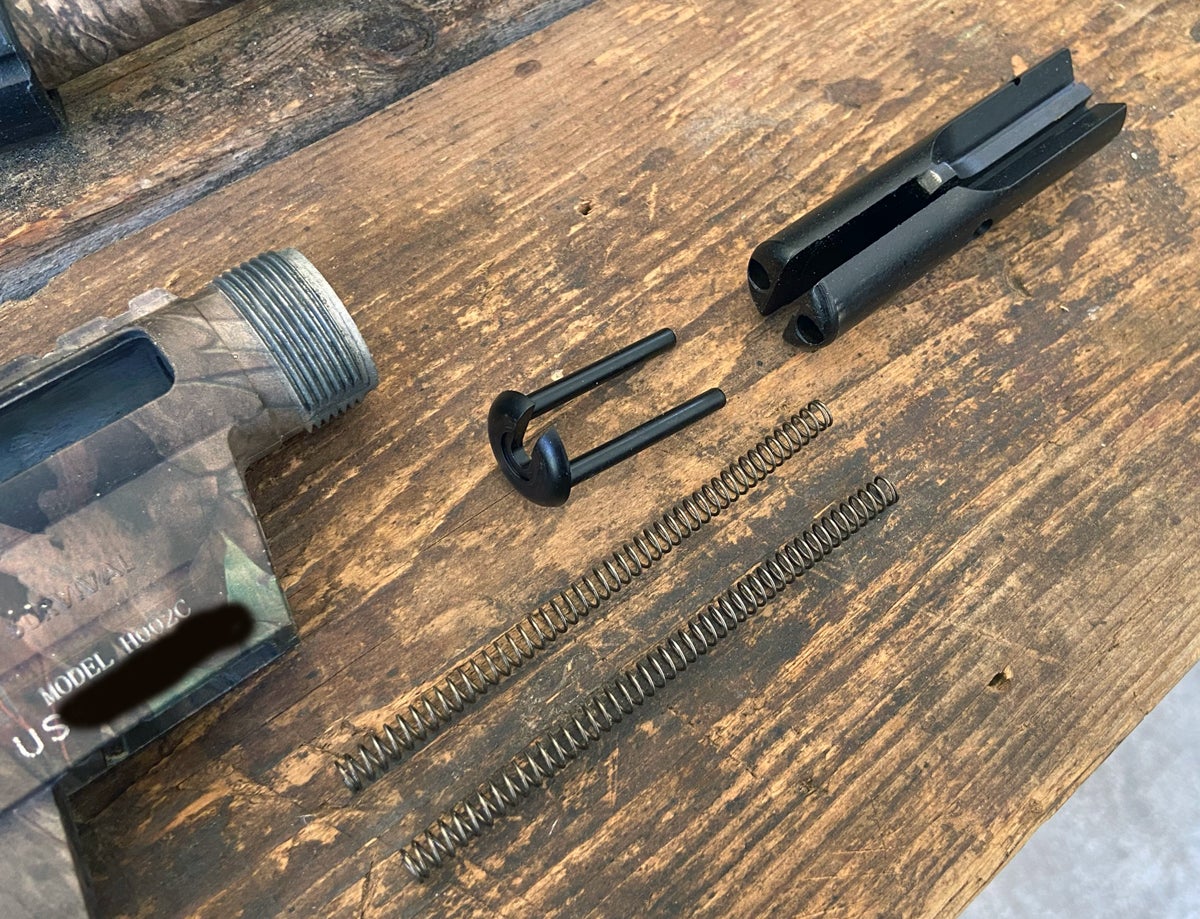
Assembly of the bolt, springs, and guide is easy: slip the springs into the bolt, slip the guide into the springs with the notch downward (same direction as the notch in the bolt), and then slip that assembly guide-first into the receiver. Push the bolt in until the hole in its side lines up with the front end of the bolt handle slot, and slip the large end of the bolt handle into the bolt. Done!
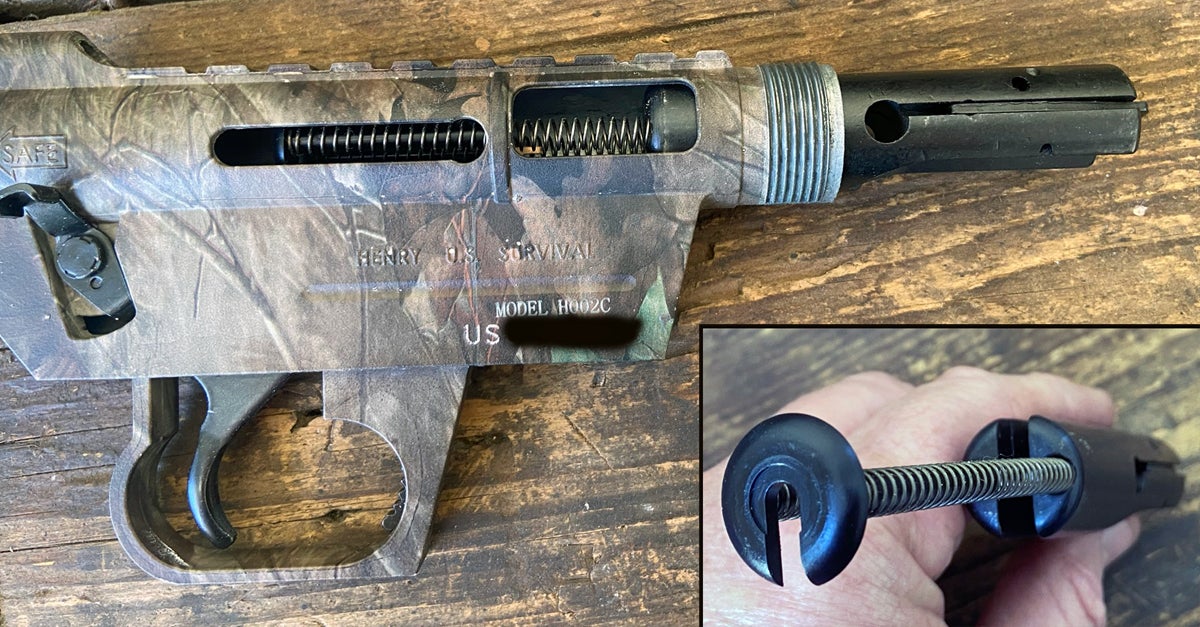
To assemble the rifle, set the receiver into the notch in the butt stock and secure it by threading the thumb screw located in the pistol grip into the hole in the bottom rear of the receiver. Don’t over tighten the screw; snug is good enough.
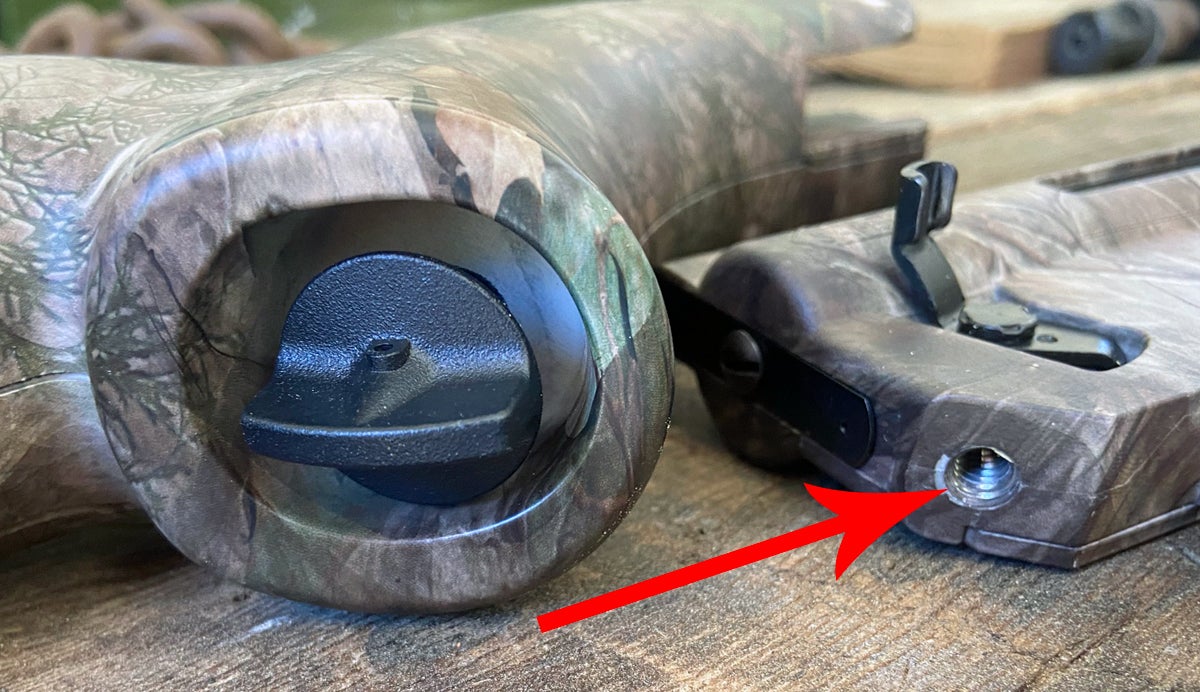
The barrel is an interesting assembly; a steel liner contains the chamber and bore which is surrounded by tough ABS plastic. The ramp for the front sight is part of the ABS, and molded lightly into the right rear of the barrel is 22 LONG RIFLE ONLY.
To attach the barrel, slip the rear of the barrel into the front of the receiver. A locating pin will index the barrel via a slot in the receiver, but it’s not hard. Naturally, you want the front sight on top. Then, hand-tighten the barrel nut to hold the barrel in place.
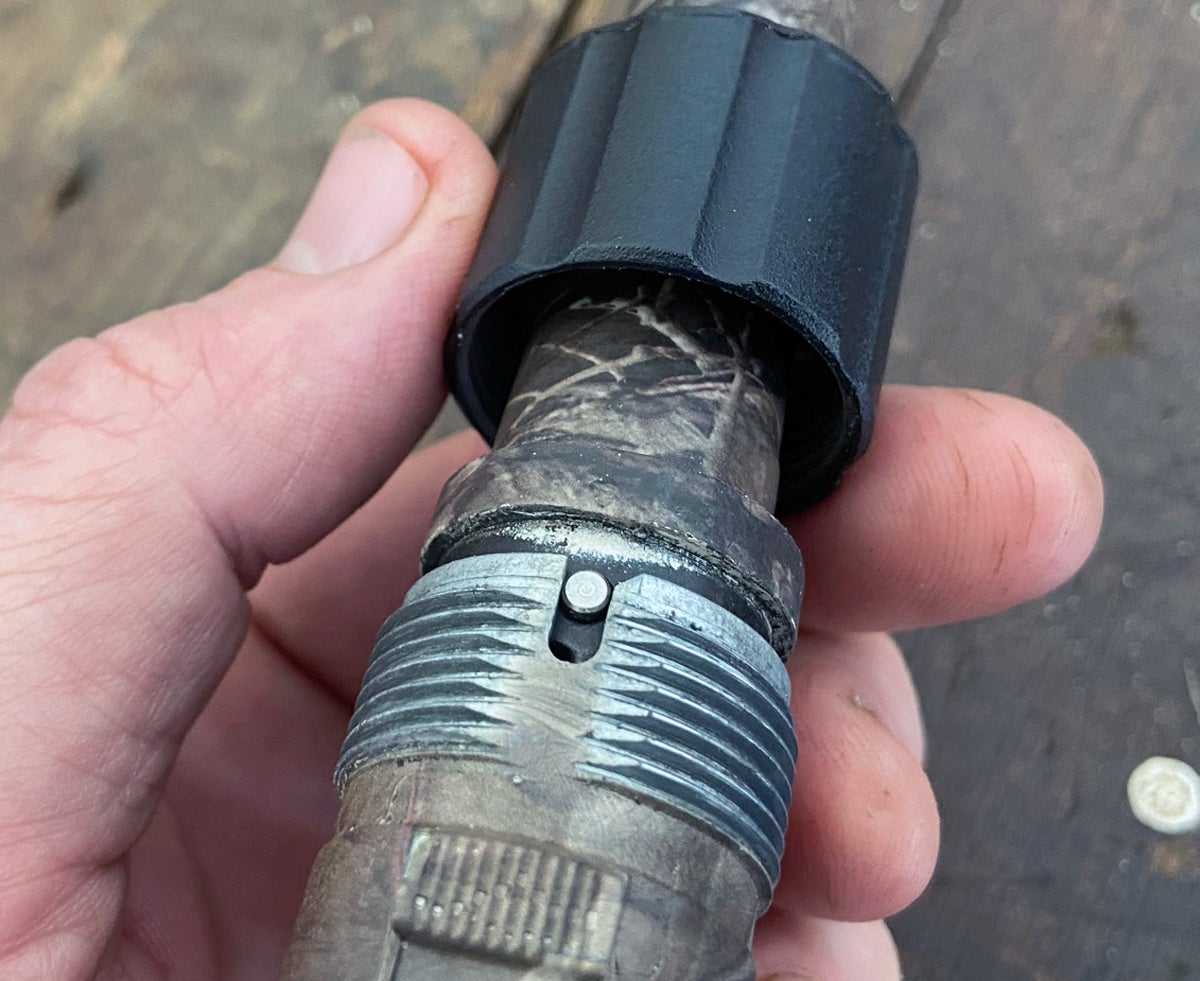
Now you’ll notice the firearm is actually off-center in the butt stock. For a right-hander, this is a good thing and I find the fit to be natural because I can get a really good cheek weld when aiming the Henry AR-7.
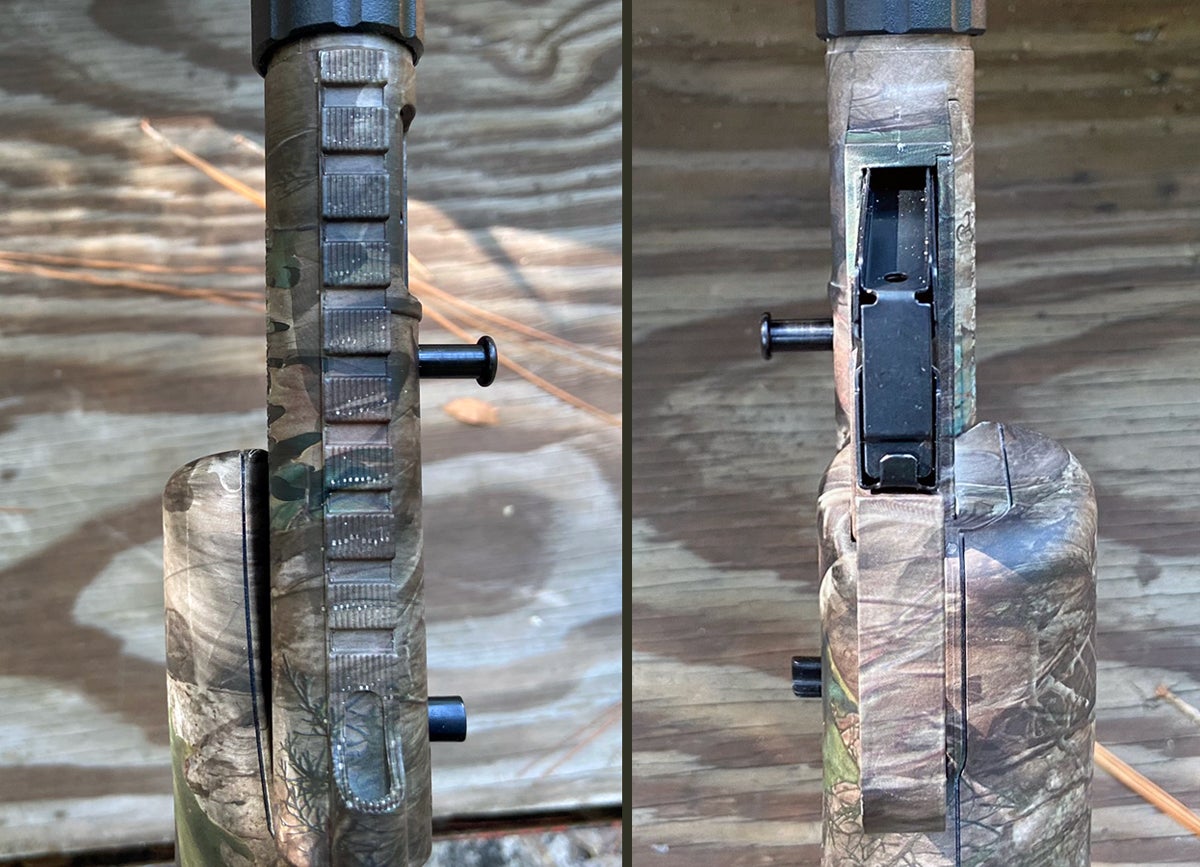
If you prefer an optic such as a riflescope, a dovetail rail is cast into the top of the receiver, ready to accept scopes or other sights with the typical 3/8″ rimfire-size mounts.
Speaking of aiming, the bright orange front sight works great in conjunction with the rear peep sight which is a simple piece of sheet metal with a hole in either end. You can flip it if you want a smaller aperture.
I found the larger aperture to work very well for target shooting and hunting, and although the rear sight can be moved up and down to adjust for elevation, my rifle was dead on right out of the box. Should you need to adjust windage, you can drift the front sight right or left in its dovetail notch.
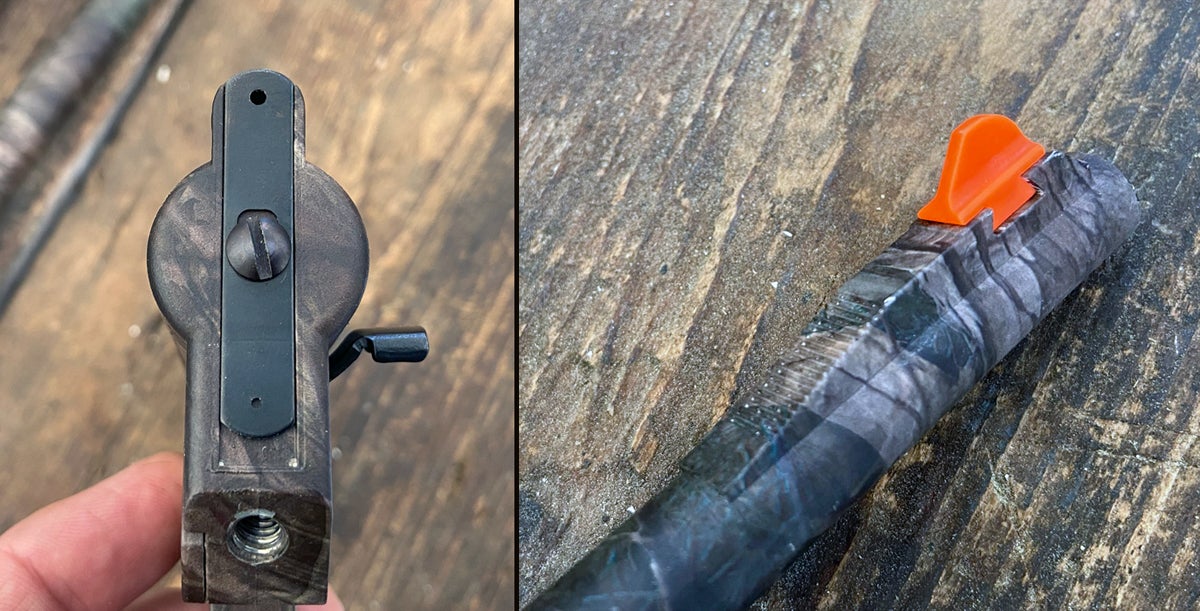
The rifle I tested bears the TrueTimber Kanati camouflage pattern, and it’s well-done. Henry says the AR-7 weighs 3.5 pounds, and I measured mine at 3.53 with both magazines loaded.
The trigger had a bit of creepy crunch at first, but the more I used it the better it got. When I first wrote about this rifle the trigger pull was averaging 3.5 – 3.75 pounds. Now it’s measuring right at 3 pounds with very little creep. Not bad at all for a compact survival rifle.
Henry AR-7 Survival Rifle Specifications
- Model: H002C
- Action: Semi-automatic 22 LR only
- Barrel Length: 16.125″ Steel Covered with Coated ABS Plastic & 1:16″ Twist Rate
- Overall Length: 35″ (35.75 inches muzzle to toe)
- Stowed length: 16.75″ (17.75 inches tip to toe)
- Weight: 3.50 Lbs.
- Receiver Finish: True Timber-Kanati Camo
- Sights: Peep Aperture Rear with Blade Front
- Stock Material: ABS Plastic
- Buttplate/Cap: Rubber
- Length of Pull: 14″
- Safety: Thumb operated side switch
- Extras: Two 8-Round Magazines, 3/8″ Grooved Receiver for Mounting Optics, and Made in the USA
- MSRP: $388.00
Shooting the Henry AR-7
Now for the fun stuff: shooting! That is where the Henry AR-7 just plain does good. I have run all kinds of ammo through this little popper with nary a hiccup, and most of that has been cheaper bulk-pack ammo which is sometimes problematic in some firearms.
This fun little rifle just refused to mess up no matter what ammo I asked it to digest; always functioning perfectly. Accuracy was also impressive, and the big blonky butt stock helped me hold steady to make consistently accurate off-hand shots.
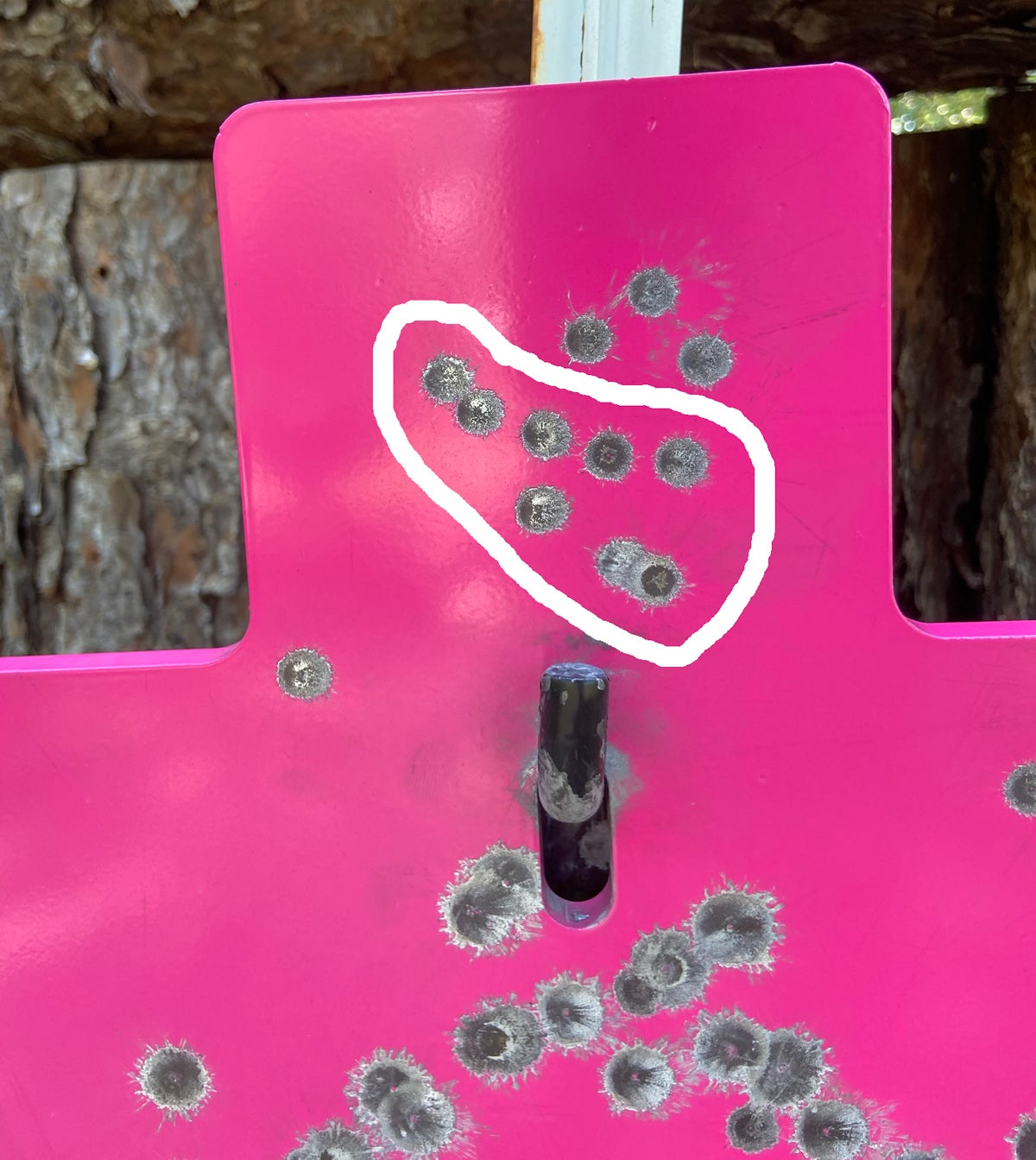
In the hunting woods, I found the Henry AR-7 easy to carry and easy to use. Its lightweight and handy length make it easy to maneuver through brushy woods, and a head-shot squirrel at 25 yards proved the rifle is capable of great shooting on any occasion.
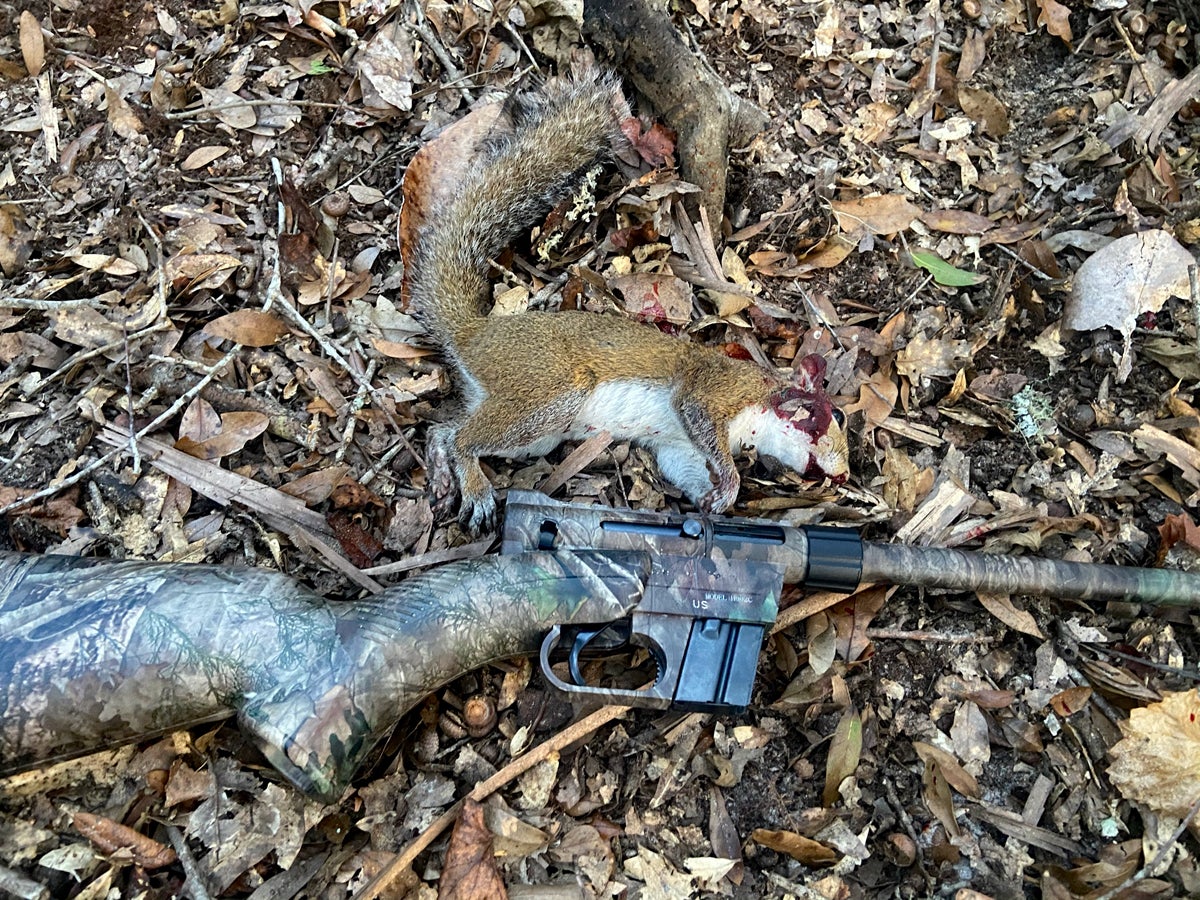
And now it’s time for true confessions: I never cleaned or lubricated this rifle for most of the time I had it. I only wiped off the bolt and swabbed the inside of the receiver with some Steelgard when it was time to take photos for this review; otherwise, I just used the rifle and enjoyed it. While that’s not recommended, it’s what most of us will do, and it’s nice to know the Survival Rifle can survive a bit of neglect and keep on keepin’ on.
Final Thoughts
The Henry AR-7 Survival Rifle is a really nice little 22 Long Rifle, and far more accurate and easy to use than I expected it to be. If you’ve been burned by other manufacturers’ versions of the AR-7, rest assured this is not the same rifle. I’d have to say that being manufactured by Henry Repeating Arms is the best thing that’s ever happened to the AR-7. Henry Repeating Arms has improved the gun and made it pretty dang nice, and if your experience is anything like mine I think you will be happy with one of these handy little rifles.